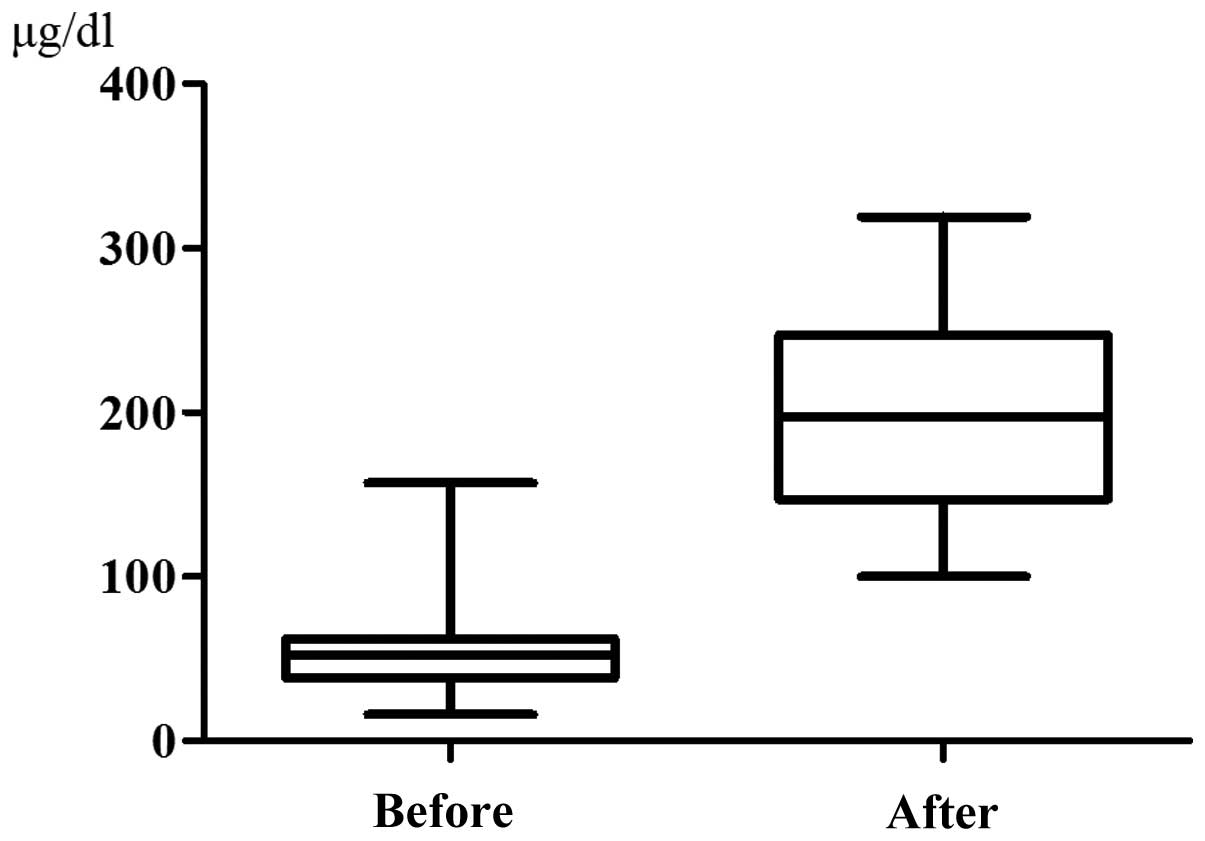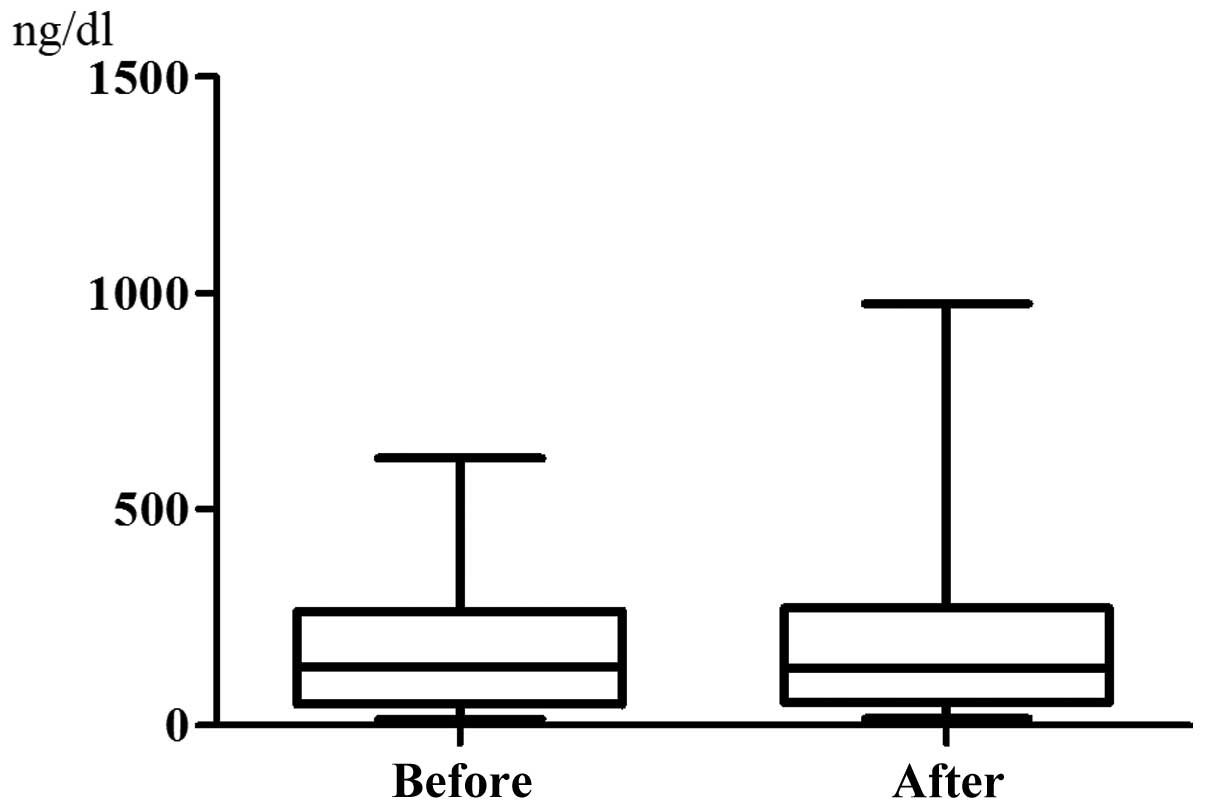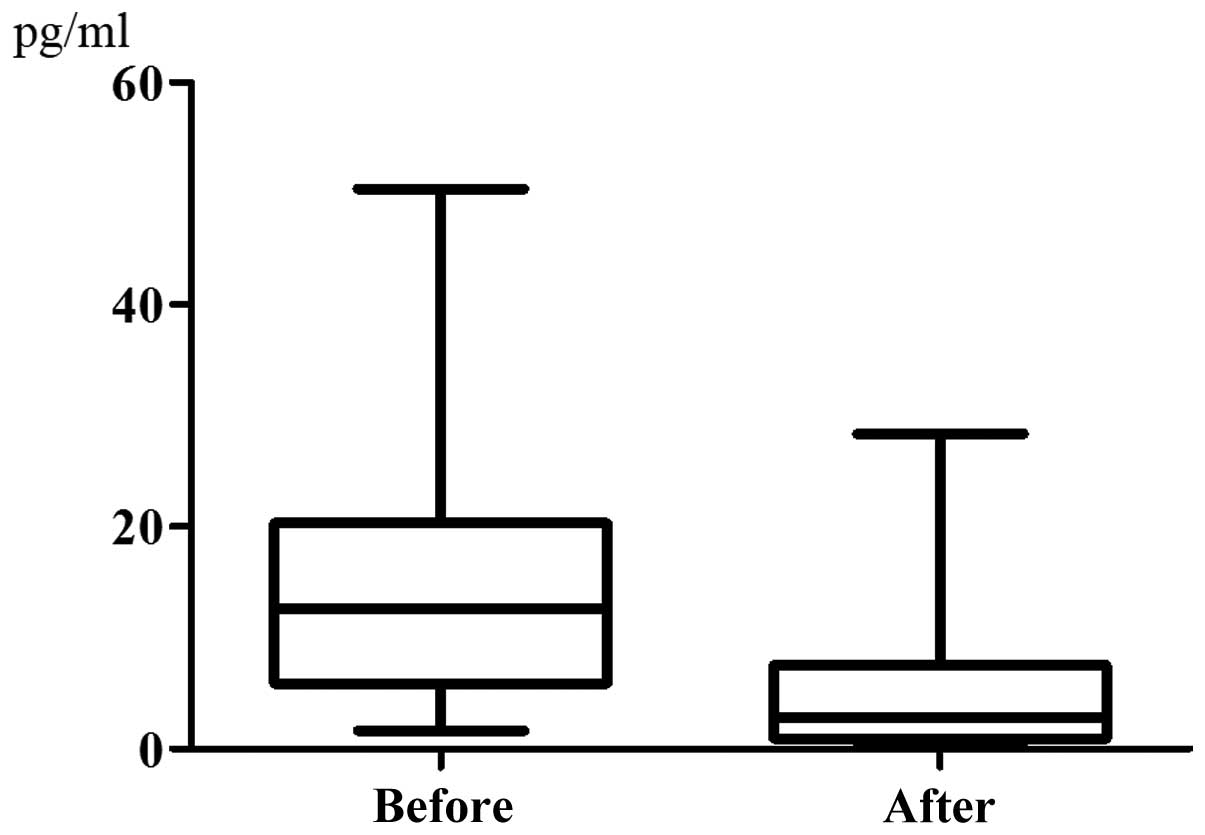Mechanism underlying the transient increase of serum iron during FOLFOX/FOLFIRI therapy
- Authors:
- Published online on: August 11, 2014 https://doi.org/10.3892/mco.2014.385
- Pages: 968-972
Metrics: Total
Views: 0 (Spandidos Publications: | PMC Statistics: )
Total PDF Downloads: 0 (Spandidos Publications: | PMC Statistics: )
Abstract
In patients with advanced colorectal cancer (CRC), a transient significant increase of serum iron is observed during chemotherapy with leucovorin and fluorouracil plus oxaliplatin (FOLFOX) or leucovorin and fluorouracil plus irinotecan (FOLFIRI). Serum iron may be a useful and convenient predictor of the response to chemotherapy; however, the mechanism underlying its increase has not been fully elucidated. Accordingly, the mechanism underlying the elevation of serum iron during chemotherapy was investigated in 20 patients with advanced CRC who were treated between September, 2012 and July, 2013. The levels of iron, ferritin, aspartate aminotransferase (AST), alanine aminotransferase (ALT), hemoglobin (Hb), hepcidin-25, interleukin (IL)‑6 and soluble transferrin receptor (sTfR) were measured before and 48 h after chemotherapy. The serum levels of iron and hepcidin-25 were found to be significantly increased after chemotherapy (P<0.0001), whereas those of IL-6 were significantly decreased (P=0.0057). There were no significant changes in any of the other parameters. The lack of significant changes in AST, ALT and Hb suggested that the elevation of serum iron was not due to the destruction of hepatocytes, whereas the stable sTfR level suggested no destruction of erythroblasts. Hepcidin‑25 regulates iron metabolism and decreases serum iron levels; it is increased by an iron load and IL-6, but is decreased under anemic or hypoxic conditions. The suppression of erythropoiesis increases serum iron levels and chemotherapy suppresses erythropoiesis. As serum iron and hepcidin‑25 were both significantly increased and IL-6 was significantly decreased, with no significant changes in sTfR, it appears that the elevation of serum iron during chemotherapy may be secondary to reduced iron consumption by erythropoiesis, leading to increased expression of hepcidin‑25 and suppression of Il-6 via negative feedback.














